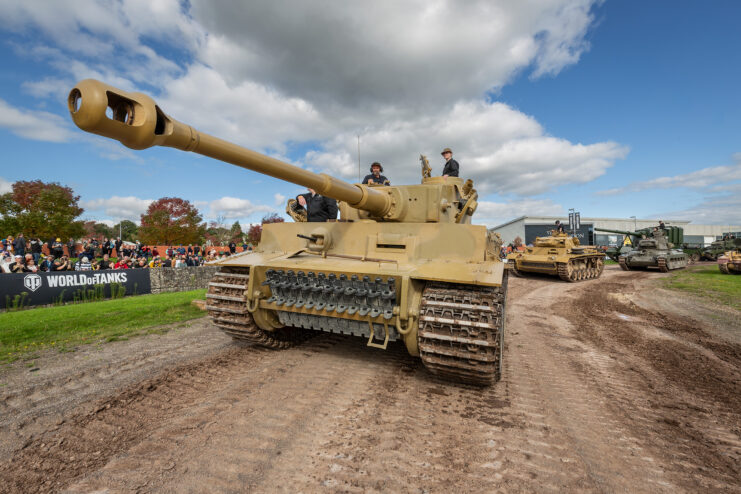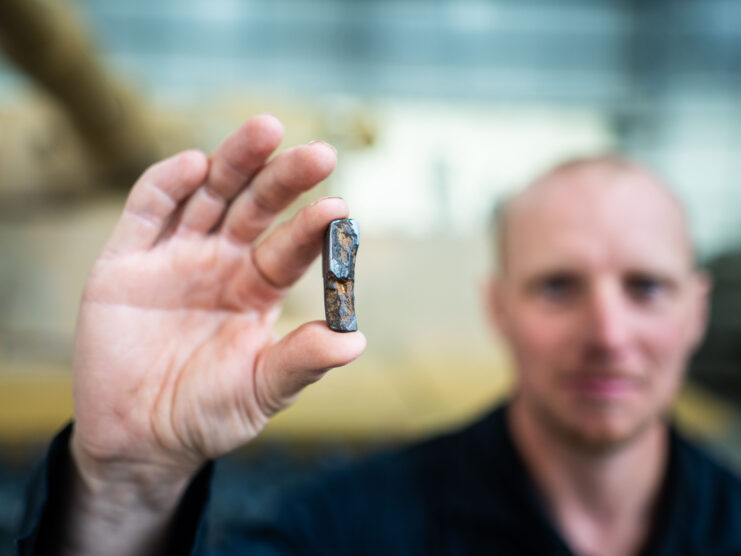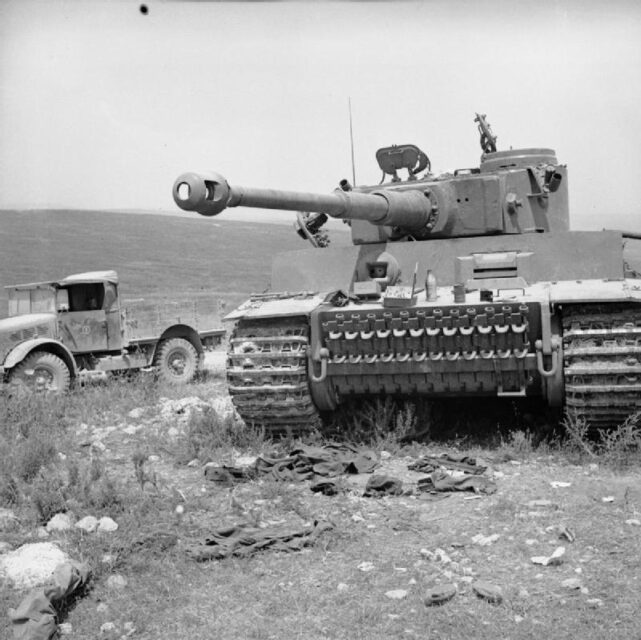Infamous World War II Tank Reveals New Evidence of Desperate Final Battle
A piece of shrapnel concealed inside one of The Tank Museum‘s most popular exhibits for over 80 years provides insight into the bloody history of tank action during the Second World War.

Tiger 131 was the first of the Tiger tanks to be captured intact by the Western Allies, making it a significant prize. To this day, it remains one of the most famous tanks in the world, with thousands of fans flocking to see the only running Tiger I at The Tank Museum’s Tiger Day.
Keeping a tank that’s over 80 years old in running order requires regular servicing, meaning the ins and outs of Tiger 131 are well known to the museum’s Workshop team. Therefore, the engineers who performed a routine inspection were surprised to discover a chunk of shrapnel inside one of its wheels.
Nick Booth, Head of Curatorial Services at The Tank Museum, said in a press release:
“Tiger 131 has been extensively restored and overhauled in recent years, so to find a remnant from the battle in which it was captured is both remarkable and sobering. It’s a stark reminder of the history of this tank and of the desperate conditions in which British soldiers fought it to a standstill on a Tunisian hillside in 1943.”

On April 24, 1943, the British advanced toward Tunis, gaining an important position on the hills of Medjez-el-Bab. They held out against a strong enemy counterattack supported by German tanks – including Tiger 131 – with British ones arriving just in time to prevent the infantry forces from being over-run.
Their fire was enough to disable the Tiger and cause its crew to flee – a fortunate decision for the Allies, as Tiger crews were under strict orders to destroy disabled tanks, to prevent them falling into enemy hands.
Under heavy German shelling, the British held the hill for several days, with the abandoned tank halted among their positions. During this time, Tiger 131 took further damage, which is still visible on its rear tinwork.
Historian James Donaldson said:
“We’re not certain if this shrapnel was a result of British tank shots or the German artillery fire that British troops were subjected to. It’s a heavy lump of metal, typical of the sort that would have been flying around the battlefield.
“You can only imagine what this would have done, had it hit someone.”

When Tiger 131 was recovered, it was found to be relatively undamaged, apart from the shot that had wedged itself in the turret mechanism and disabled the gun.
This World War II veteran has undergone several restorations over the years to keep it in running order, but its battle scars are preserved for all to see.
More from us: See Historic World War II-Era Tanks in Action at Tiger Day Autumn 2025
Tiger 131 – the world’s only running Tiger I tank – will be back in the arena for Tiger Day Autumn on September 20, 2025. Head to The Tank Museum’s website to book your tickets for this sell-out event.
The post Infamous World War II Tank Reveals New Evidence of Desperate Final Battle appeared first on warhistoryonline.
Infamous World War II Tank Reveals New Evidence of Desperate Final Battle
Philippines Truth
Post a Comment
0 Comments